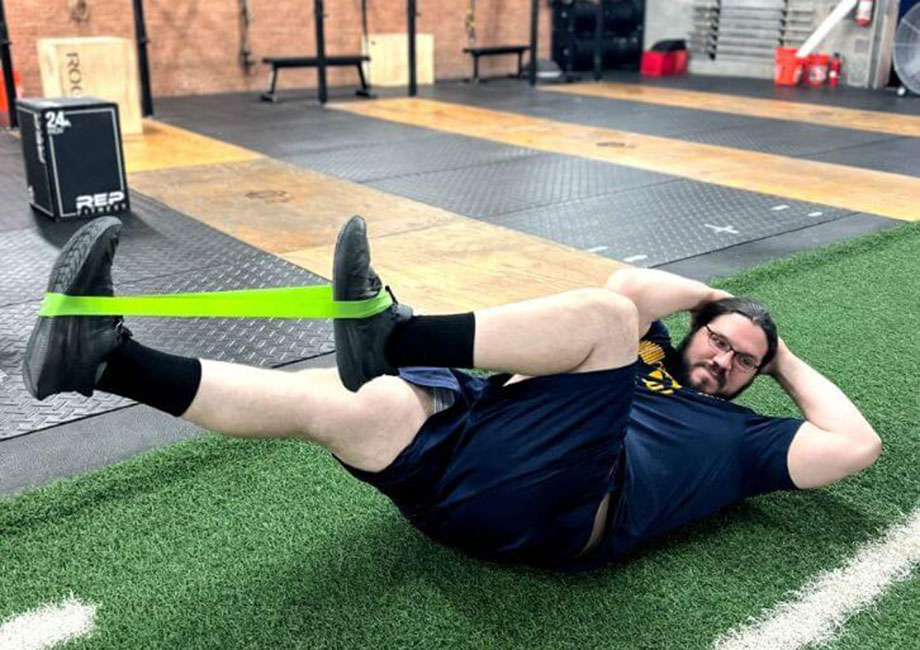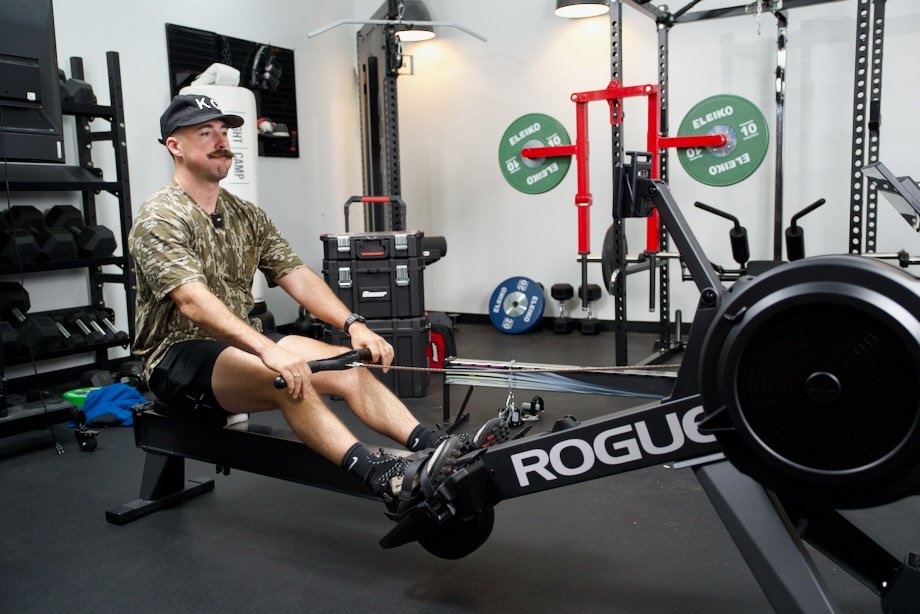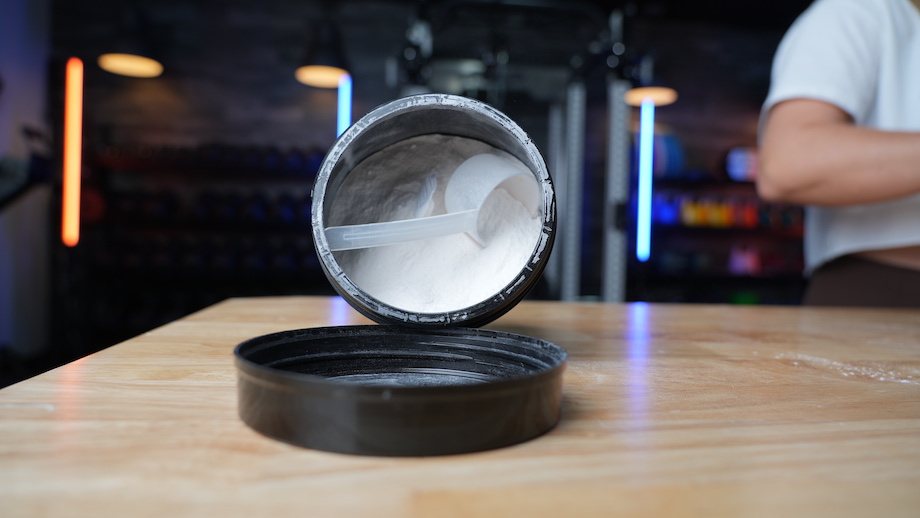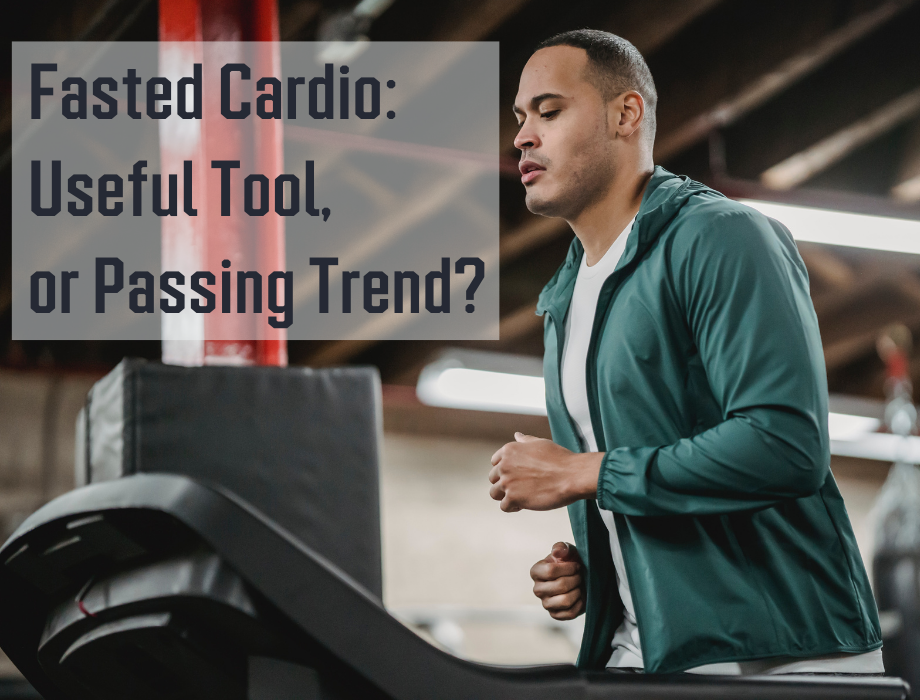The crunches exercise, a spinal flexion movement, gets a bad rap from many experts and personal trainers due to the compression on your low back. But not all crunches are alike, and bicycle crunches may be an outlier. The bicycle crunch—50% cardio, 50% rotational exercise, equaling 100% ab burner—is great if you like to feel your abs working.
But only if you do them correctly. The bicycle crunch may seem simple on paper, but there are specific things to watch out for to make this a safe and effective exercise for your core. Here, I’ll use my knowledge as a certified personal trainer (CPT) to guide you through proper form, technique tips, benefits, and a few variations to spice up your crunch game.
RELATED: 6 Rotation and 6 Anti-Rotation Exercises to Elevate Your Core Strength
Ready to feel the burn? Then let’s go!
How To Do Bicycle Crunches
Simply put, here’s how to do bicycle crunches with proper form.
- Lie face up with your lower back on the ground.
- Bend your knees at a 90-degree angle, slightly above your hips.
- Place your hands lightly behind your ears (making sure not to strain your neck) and raise your head and torso so your shoulder blades are off the ground.
- Engage your core muscle by continuing to press your lower back into the ground.
- Extend your left leg and bring your left elbow to the inside of your right knee.
- Bring the left leg back, rotate, and touch it with the right elbow as the right leg extends.
- Alternate sides for desired repetitions or duration.
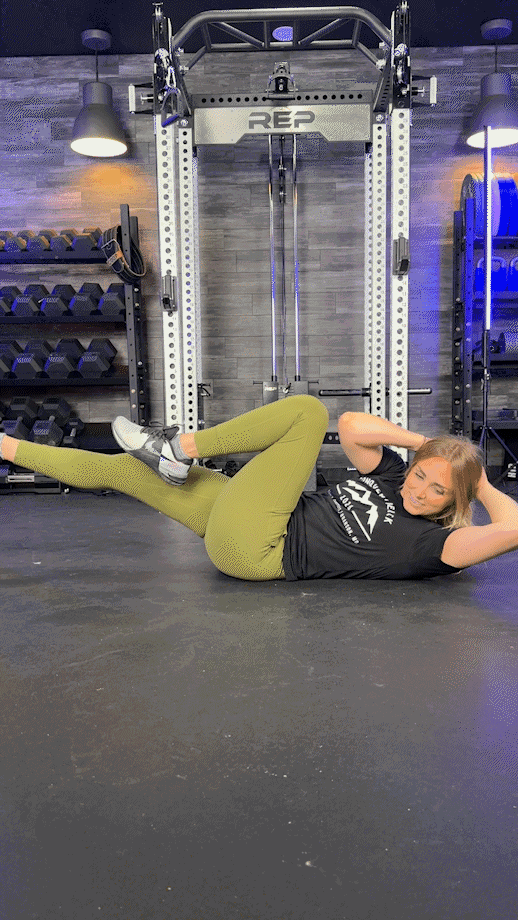
Trainer Tips on Form
The bicycle crunch is a safe and effective core workout for the rectus abdominis, oblique muscles, and hip flexors, especially when you pay attention to these trainer tips on form to do it correctly.
RELATED: Oblique Workouts
Pay Attention to Set Up
The key to the bicycle crunch is to set it up properly and maintain that form when in motion. Ensure your lower back is on the ground with your hands lightly behind your head and knees above your hips unless extending.
Slow Before Fast
Rotating across your body to touch the opposite knee and elbow while extending the other leg requires balance, stability, and (most important) coordination. Before performing it with speed, ensure good movement by doing it with control. Plus, slowing the movement down a tad will help you get more out of this functional core exercise and prevent neck and back pain.
Follow Your Elbow
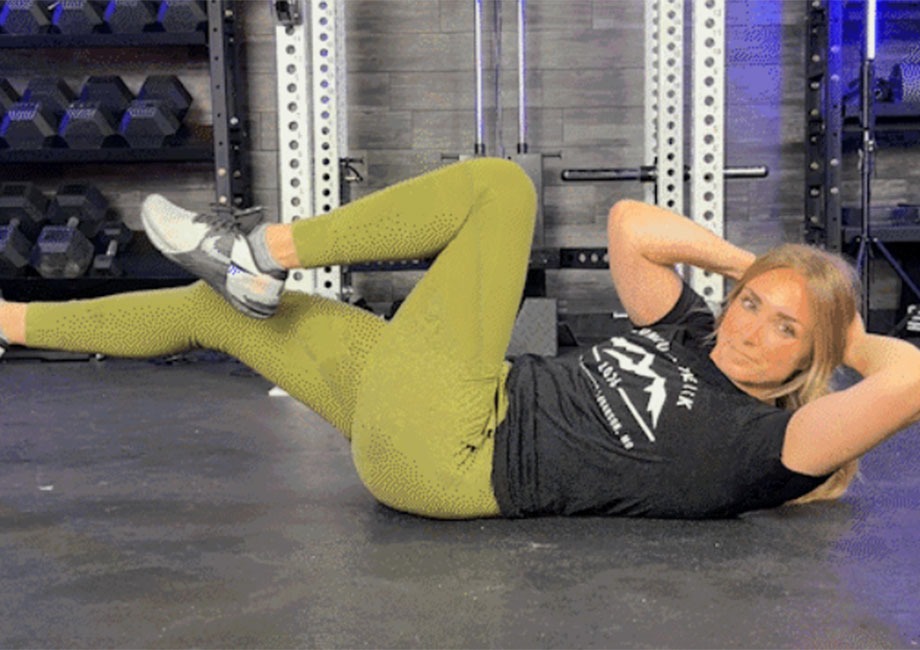
Your eyes should be following your working elbow to get the full benefit of this rotational movement while keeping your head and neck safe. This little-known form tip makes the rotation easier and helps avoid any of the significant bicycle crunch mistakes I’ll discuss below.
Benefits of Bicycle Crunches
Yes, you’ll fire up your core muscles when performing bicycle crunches at home or the gym, but you’ll also be getting a few more vital benefits.
Improved Core Strength
When performed with good technique, the bicycle crunch is excellent for strengthening your upper abs (rectus abdominis), the transverse abdominis (keeping the lower back neutral), and the obliques due to the movement’s rotational nature.
RELATED: Upper Ab Workouts
Safer Crunch for Your Spine
Many crunch variations flex and extend the spine, and this can aggravate lower back issues. Why? Because your lower back is built for stability, not movement. When you press your lower back firmly into the ground, the bike crunch doesn’t flex and extend, making it safer for your spine.
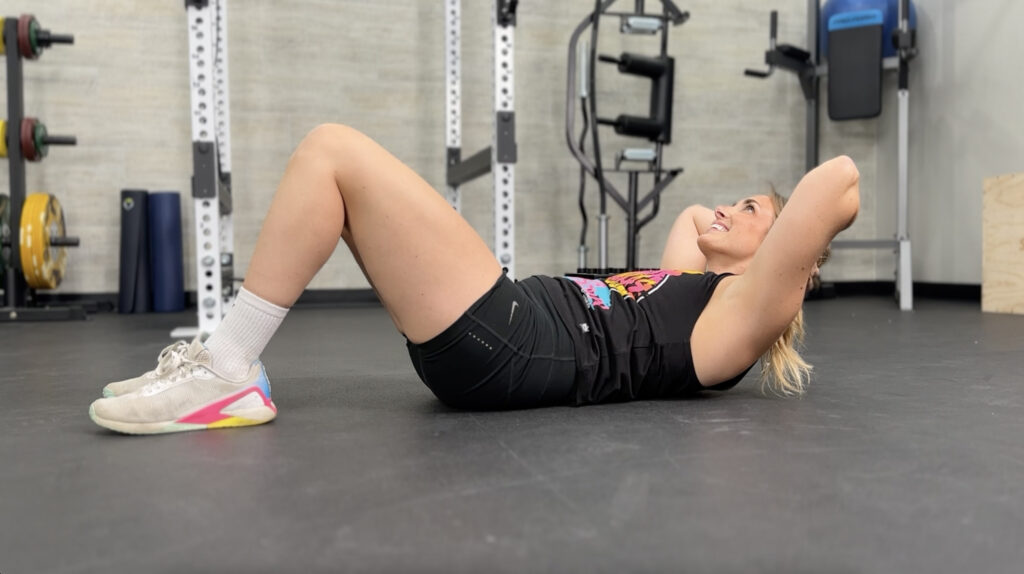
Improved Balance And Coordination
The bicycle crunch involves crossing the body and extending the opposite leg while supporting yourself with your lower back. The opposite arm/opposite leg action helps improve coordination and balance.
RELATED: Lower Back Exercises to Try for Stability and Strength
Bicycle Crunch Mistakes
You’ll want to avoid these bicycle crunch common mistakes to get the most out of this core-crushing (not literally, of course) exercise while preventing unnecessary strain and injury.
Hip Rotation
Your upper body and core should do all the rotation, not your hips. Additionally, your legs should move back and forth in a biking motion, but your hips should stay still. Keeping your lower back pressed into the ground should stop any excess hip rotation.
RELATED: Hip Flexor Exercises
Straining Your Neck
Don’t pull on your head or neck with your hands while doing the rotation. If you find your neck hurting or straining while rotating, just rotate as far as you can without discomfort. Remember to let your eyes follow your elbow to drive the rotational work.
Bicycle Crunch Variations and Alternatives
To progress your crunch game and prevent workout boredom, here are some variations and alternatives I recommend you take out for a spin.
Standing Bicycle Crunch
Why do it: The standing bicycle crunch requires more balance and core and hip flexor strength because you’re only supported by your feet, not your lower back.
How to do it:
- Stand tall with your feet hip-width apart and pointed forward.
- Bring both arms out to your sides with your elbows bent at 90 degrees and palms behind your head.
- Raise your right knee and rotate your left elbow to touch it
- Then, repeat with the left knee and right elbow.
- Alternate sides for desired reps or time.
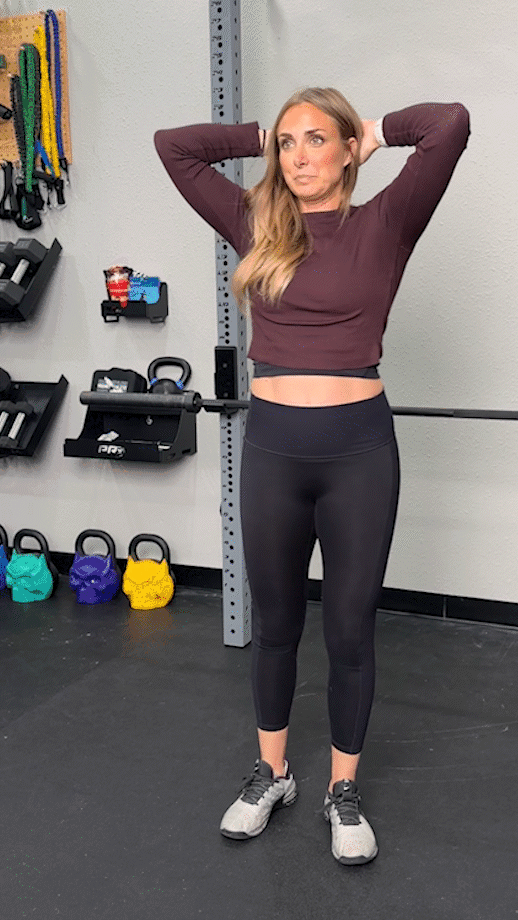
Banded Bicycle Crunch
Why do it: Adding a mini-band around your feet while doing the bicycle crunch adds further resistance to your hip flexors, quads, and core.
How to do it:
- Lie face up on the ground and place a mini-band around both feet.
- Bend your knees at a 90-degree angle above your hips and press your lower back into the ground.
- Place your hands lightly behind your ears and raise your head and torso.
- Extend your right leg and bring your right elbow to the inside of your left knee.
- Then, alternate sides for desired repetitions or for time.
RELATED: Best Resistance Bands
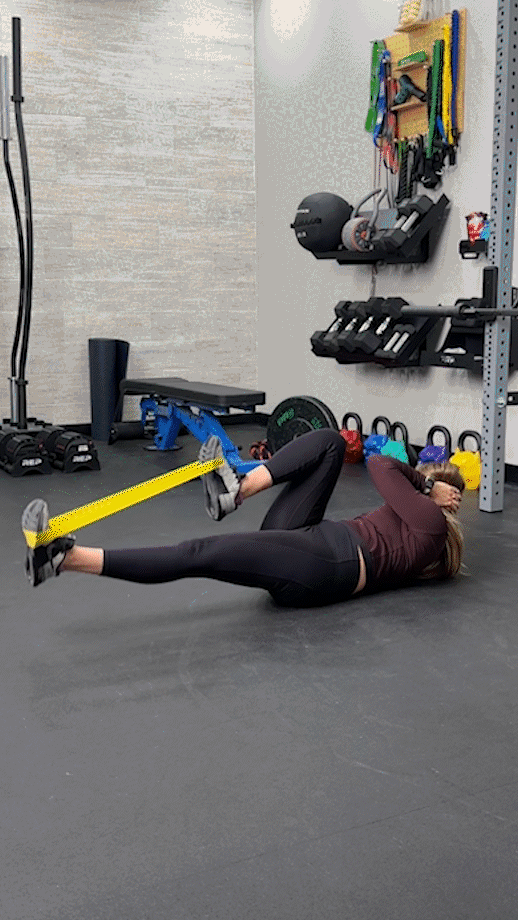
Kneeling Cable Crunch
Why do it: The kneeling cable crunch allows you to add weighted resistance to strengthen your six-pack muscles further.
How to do it:
- Begin in the tall-kneeling position in front of the cable machine, using a rope attachment.
- Grip the rope attachment at head height and crunch forward until your entire torso is parallel to the ground.
- Slowly return to the starting position, reset, and repeat for reps.
RELATED: Best Cable Ab Workouts
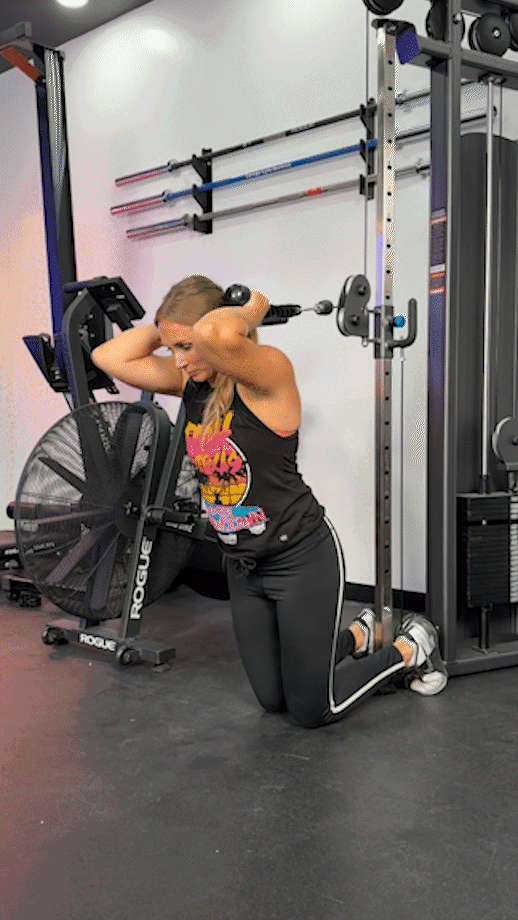
Cross-Body Mountain Climbers
Why do it: With cross-body mountain climbers, you’ll get all the benefits of plank exercises and the bicycle crunch with more shoulder strength thrown in there, too.
How to do it:
- Begin in the push-up plank position, with your hands underneath your shoulders, glutes engaged, and spine neutral.
- Drive your right knee toward your left elbow by rotating your torso.
- Return to the starting position and repeat on the opposite side.
- Keep alternating sides for desired reps or time.
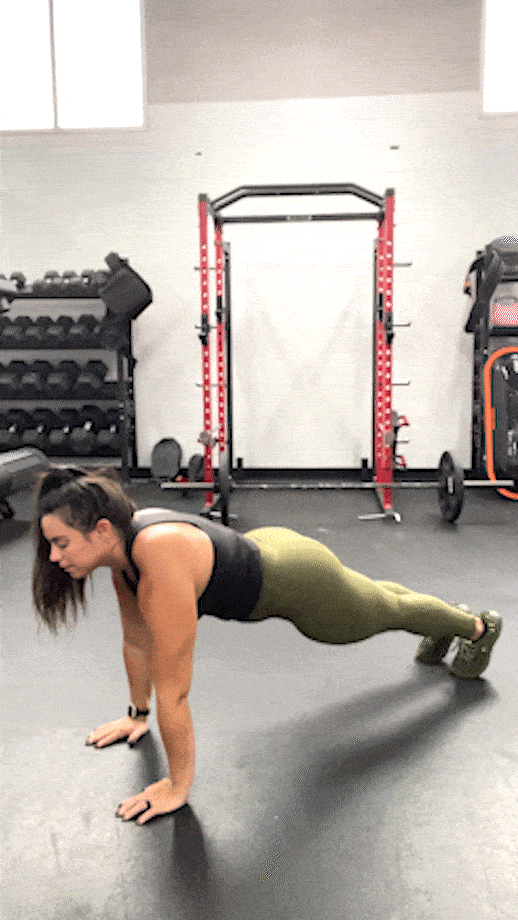
Bicycle Crunches: FAQs
What is the difference between crunches and bicycle crunches?
Both involve spinal flexion, but the most significant difference is that the standard sit-up and ab crunch don’t include torso rotation or the weight of your legs.
Can bicycle crunches burn belly fat?
Bicycle crunches don’t burn many calories or fat from the belly area but are more for strengthening and toning the core area rather than weight loss. If weight loss is your goal, a consistent resistance training regimen and calorie deficit are recommended.
What happens if I do bicycle crunches every day?
Your upper abs, obliques, and transverse abdominal muscle groups will all have better strength and muscle endurance, but you might get bored doing the same daily ab exercise or fatigue your core muscles.
RELATED: Best Ab Exercises


